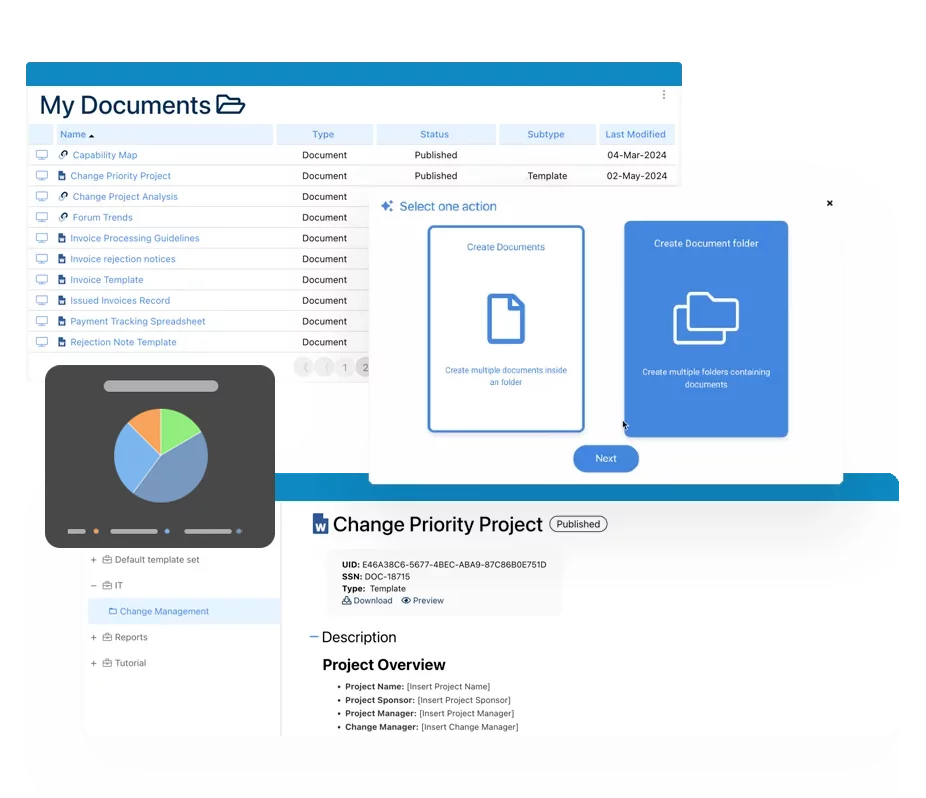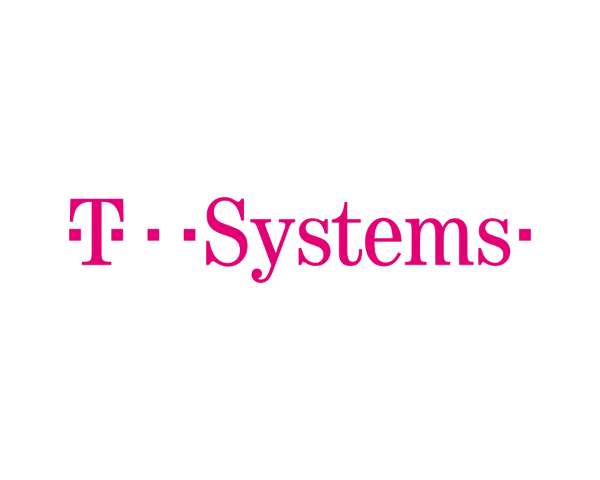- Business Process Management (BPM)Document Management System (DMS)Electronic Quality Management System (QMS)Risk, Governance & Compliance (GRC)Low Code Rapid Application Development (LC)Business Continuity Management (BCM)Enterprise Architecture (EA)Business Process Management (BPM)Document Management System (DMS)
- Document Control Overview
- AI Content Creation & Improvement
- Policy & Procedure Management (SOP)
- AI Content Mining Parser
- Collaboration & Governance
- Data Migration & Integration
- Interfacing Offline App
 Electronic Quality Management System (QMS)
Electronic Quality Management System (QMS)- Quality Management System Overview
- Document Control & Records Management
- Audit & Accreditation Management
- Corrective & Preventative Action
- Quality Event (Non-conformity / Complaint/ Compliance)
- Risk Management
- Incident Management
- Environmental Health & Safety
- Product & Supplier Management (SCAR)
- Training Management
- Control Management
- Action Items Management
- Management Review
- FMEA
- Pharmacovigilance
- Data Migration & Integration
 Risk, Governance & Compliance (GRC)
Risk, Governance & Compliance (GRC)- Risk, Governance & Compliance Overview
- Risk & Control Management
- Regulatory Compliance
- Collaboration & Governance
- Data Migration & Integration
- Interfacing Offline App
 Low Code Rapid Application Development (LC)
Low Code Rapid Application Development (LC)- Low Code Automation Platform Overview
- Electronic Web Form Design (eFORMS)
- Database Table Entity Designer
- System Integration Designer
- Design & Manage Tasks
- Design & Manage BPMS Apps
- Custom Rules/Guards/Actions
- Electronic Services
- User Homepage
- BAM (Business Activity Monitoring)
- Custom Dashboard Design
- Data Migration & Integration
 Business Continuity Management (BCM)
Business Continuity Management (BCM)- Business Continuity Management Overview
- Business Impact Analysis
- Disaster Recovery Simulation
- Action Item Management
- Mass Notification Management
- Asset Management
- Interfacing Offline App
 Enterprise Architecture (EA)
Enterprise Architecture (EA) - IndustriesRegulatory ComplianceUse CasesLearning CenterFramework & PracticesIndustries
- Healthcare
- Medical Device Technology
- Life Science, Pharmaceutical
- Aerospace & Defense
- Airlines and Aviation
- Media & Telecommunications
- Government and Military
- Technology
- Energy
- Logistics & Port Operations
- Banking & Capital Markets
- Retail & Consumer
- Consulting
- Education
- Engineering & Construction
- Manufacturing
- Financial Services
- Insurance
- Chemicals
Regulatory Compliance- Regulatory Compliance
- ISO
- ISO 9001 (guide)
- ISO 9001:2026 (preparation)
- ISO 17025
- ISO 27000
- ISO 27001
- ISO27002
- ISO 42001
- EU AI Act
- SOC 2 Type 1 & 2
- Sarbanes Oxley
- GxP
- GRC
- Basel
- Digital Signature
- GDPR
- IFRS
- NIST SP 800-53
 Use Cases
Use Cases- Quality Management System (QMS)
- Digital Transformation
- Continuous Improvement
- Governance, Risk & Compliance
- Knowledge Management
- System Deployment (ERP, CRM…)
 Learning CenterFramework & Practices
Learning CenterFramework & Practices - AboutCustomer SuccessPartners



ITIL v3 Framework & Practices
Please Select contact form.
In today’s business world, performance is everything. This is why companies are increasingly dependent on IT in order to satisfy their corporate aims and objectives.

The IT Role in Any Organization’s Success
In today’s business world, performance is everything. This is why companies are increasingly dependent on IT in order to satisfy their corporate aims and objectives. Top of the line IT services allow all departments to function in a better, more efficient capacity. With the need for more sophisticated IT solutions being greater than ever before, IT departments require their own set of process standards so as to be able to anticipate and react to potential problems and ongoing changes such as ITIL v3 Framework.
The ITIL Framework Overview
With its systematic, proven approach to the management of IT service, ITIL’s guidance can allow you to:

Reduce your costs

Streamline your IT processes

Improve your IT department’s services

Improve the productivity of the end-users of these services

Improve customer satisfaction of the end-users

Improve knowledge-management at a company-wide level
LEAN ITSM TOOLKIT
How Interfacing can help
The Lean ITSM Toolkit is a pre-packaged framework that is integrated with Interfacing’s award winning BPM software, the Enterprise Process Center. The toolkit contains compliant business processes, controls and rules from the leading IT industry standard frameworks such as ITIL, COBIT and ISO/IEC 20000. They are all integrated seamlessly to eliminate redundancy caused by overlapping processes and controls, which reduces the effort and costs of implementing and supporting multiple ITSM strategies by focusing efforts on IT process customization instead of building the core.
Lean ITSM Toolkit Features
- 25 ready to use ITIL® V3 processes built inside EPC’s process modeler
- All processes broken into sub-processes down to the operational level, and include roles, responsibilities, descriptions, and procedures
- Conformity of all process elements to the ITIL KPI metrics
- COBIT control objectives linked at the sub-process level
- ISO/IEC 20000 conformity rules linked at the sub-process level
- Comes equipped with a Practical Guide written by IT experts with over 20 years of experience, which guides the user through process engineering from day one of implementation
Lean ITSM Toolkit Benefits
- Pre-established processes and rules guide you and allow you to focus your efforts on IT process customization and improvement
- Elimination of redundancies caused by overlapping processes and controls through the Toolkit’s integrated approach
- Guarantees a business-focused approach to implementing IT service management by ensuring executive support and business participation.
- Collaboration of your processes with employees through EPC’s web browser portal which allows you to track, notify, document, communicate and obtain feedback for your ITSM processes.
- Monitor and track the status of ISO 20000 conformity compliance progress
- Produce IT process reports your company needs
- Automatically generate process books
- Associate process activities to documents, eforms, risks, KPIs, business rules, risks & controls.
- Automate processes with built in approval cycles through EPC’s workflow engine
- Aid your company in reaching CMMI maturity level 3 through proper implementation
Why do we need ITIL, COBIT and ISO 20000 frameworks?
With increasing dependence on IT departments to provide effective support for business processes, the storage, access, security and maintenance of information must be managed by a sophisticated technical infrastructure. To provide the quality of service expected by customers, controls must be placed in order to design, deploy, and monitor IT services.You can rely on the fact that
- ITIL will continue as a single, consistent standard worldwide,
- ITIL is clearly distinguished from unofficial, unapproved course providers,
- ITIL is in accordance with international best practices, endorsed at the highest level by the G8 Summit at Gleneagles in July 2005.
How BPM Can Help?
Business Process Management (BPM) solutions provide the language and processes required to coordinate all of your IT department’s mandates and initiatives, allowing you to improve the department’s service and end-user productivity through increased satisfaction. It is also a great way to manage knowledge and generate cost-savings throughout the company.Why Choose Interfacing?
With over two decades of AI, Quality, Process, and Compliance software expertise, Interfacing continues to be a leader in the industry. To-date, it has served over 500+ world-class enterprises and management consulting firms from all industries and sectors. We continue to provide digital, cloud & AI solutions that enable organizations to enhance, control and streamline their processes while easing the burden of regulatory compliance and quality management programs.
To explore further or discuss how Interfacing can assist your organization, please complete the form below.

Documentation: Driving Transformation, Governance and Control
• Gain real-time, comprehensive insights into your operations.
• Improve governance, efficiency, and compliance.
• Ensure seamless alignment with regulatory standards.

eQMS: Automating Quality & Compliance Workflows & Reporting
• Simplify quality management with automated workflows and monitoring.
• Streamline CAPA, supplier audits, training and related workflows.
• Turn documentation into actionable insights for Quality 4.0

Low-Code Rapid Application Development: Accelerating Digital Transformation
• Build custom, scalable applications swiftly
• Reducing development time and cost
• Adapt faster and stay agile in the face of
evolving customer and business needs.
AI to Transform your Business!
The AI-powered tools are designed to streamline operations, enhance compliance, and drive sustainable growth. Check out how AI can:
• Respond to employee inquiries
• Transform videos into processes
• Assess regulatory impact & process improvements
• Generate forms, processes, risks, regulations, KPIs & more
• Parse regulatory standards into requirements

Request Free Demo
Document, analyze, improve, digitize and monitor your business processes, risks, regulatory requirements and performance indicators within Interfacing’s Digital Twin integrated management system the Enterprise Process Center®!
Trusted by Customers Worldwide!
More than 400+ world-class enterprises and management consulting firms


























































